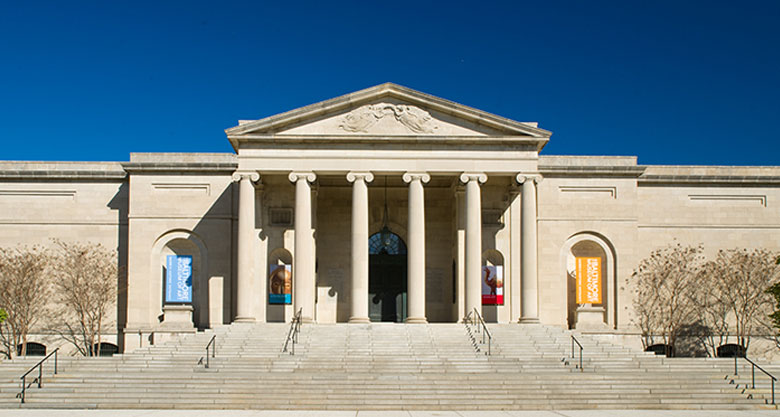Jul 10 2016 - Jan 15 2017
Baltimore, MD
The BMA presents an exquisite selection of late 19th- and mid-20th century kimonos and obis that have never been shown before. Obi are wide sashes wrapped around the kimono wearer's waist and tied in an ornate knot at the back. These stunning garments were made after the lifting of sumptuary laws during Japan’s Edo period (1603–1867) when commoners were forbidden to wear showy clothing with colors like red or purple. The Meiji Era (1868–1912) coincided with increased prosperity as Japan entered the industrial age and this newfound wealth was often expressed in lavish garments. Many of these kimonos displayed decorative motifs with symbols of the Imperial Court, especially those referring to the Heian Era (794–1185), considered Japan’s Golden Age when the court was in its most powerful, refined, and romantic period.
The centerpiece of the exhibition is a furisode long-sleeved early-20th century kimono that is yuzen-dyed and hand-embellished with gold and silver leaf, gold and silver metallic paints and embroidery, and lined in red silk decorated with gold pigments. Six other kimonos, 8–10 obis, and related Japanese objects will be displayed.
Credit: Exhibition overview from museum website
Exhibition Venues & Dates
Jul 10 2016 - Jan 15 2017
Baltimore, MD
